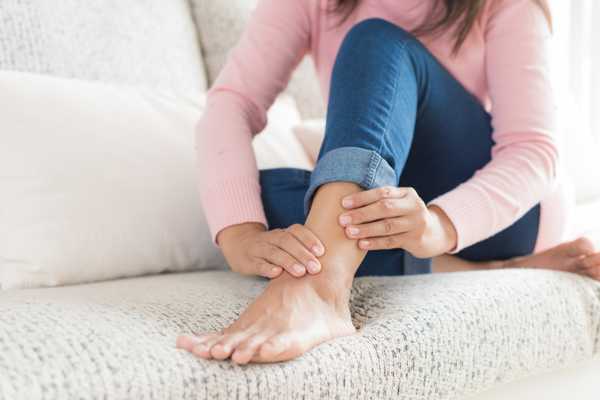Home Remedies To Help Deal With Deep Vein Thrombosis
Deep vein thrombosis (DVT) is caused by a blood clot in a vein, usually in the calf or thigh.
Deep vein thrombosis (DVT) is caused by a blood clot in a vein, usually in the calf or thigh.
Once diagnosed, it is essential to seek treatment because it can develop into a life-threatening complication called pulmonary embolism. A pulmonary embolism occurs when a blood clot travels through the bloodstream and blocks an artery in the lungs. DVT causes swelling and leg pain, and sometimes, there may be no symptoms at all. It is caused by certain pre-existing conditions that affect the way blood clots.
It can also happen when you are immobile for a long time, especially after being on bed rest due to surgery or an accident. Here is what you need to know about treating deep vein thrombosis.

What causes deep vein thrombosis?
· A previous history of pulmonary embolism or DVT.
· A family history of blood clots.
· Prolonged inactivity, such as after surgery, bed rest, or during prolonged travel.
· Damage to the walls of your blood vessels can cause blood clots to form.
· Certain medical conditions or treatments, such as cancer, heart and lung disease, chemotherapy, radiation therapy, thrombophilia, and Hughes syndrome, can cause your blood to clot more quickly than usual.
· Pregnancy increases your risk of blood clot
· It is being overweight or obese.
· Taking birth control pills in combination with hormone replacement therapy, which contains the female hormone estrogen, can make the blood more likely to clot.
What are the symptoms of deep vein thrombosis?
· Cramps or pain in the legs, especially in the calves or thighs.
· Redness or discolouration of the skin in the thighs or calves.
· Severe pain in the affected area.
· The warmth of the skin in the affected leg area.
When should you seek treatment for DVT?
· It is best to seek treatment as soon as symptoms
· If you have symptoms of pulmonary embolism, such as: B. Sudden shortness of breath, chest pain when you breathe in or cough, dizziness or lightheadedness or fainting, a rapid pulse, coughing up blood.
How do doctors diagnose deep vein thrombosis?
· The D-dimer blood test aims to detect parts of a blood clot that have broken loose in the bloodstream.
· Ultrasound shows the location of the clot in the bloodstream.
· A venogram may be recommended. This test involves injecting a fluid called contrast dye into your veins and using X-rays to detect it. This highlights a gap in the blood vessel where the clot has blocked blood flow.
What medications work for DVT?
· Anticoagulants or blood thinner medications prescribed by your doctor, such as Other medications such as heparin and warfarin, help stop the clot from growing and prevent further clots from forming.
· Relieve leg pain and swelling by walking, elevating the affected leg, and wearing compression stockings.
· Lifestyle changes, such as quitting smoking, losing weight, increasing fluid intake, and avoiding tight clothing, can help reduce the risk of blood clots.
What are some effective home remedies for DVT?
· Rest with your legs raised above your hips to reduce pressure on the veins.
· Wear compression stockings as recommended by your doctor.
· Regular exercise can improve blood circulation and combat obesity, reducing the risk of blood clots and DVT. Make a habit of walking and doing light aerobic exercise whenever possible.
· Chew slices of fresh ginger and drink ginger tea or water regularly. Ginger is a natural salicylate that blocks vitamin K and thins the blood. It also promotes blood flow in the arteries and veins while preventing high cholesterol, which can cause plaque buildup and inhibit blood flow.
· Add cayenne pepper to food or apply cayenne pepper cream or gel to the affected areas. Cayenne pepper is a natural blood thinner containing capsaicin, which promotes blood circulation, prevents blood clots, and strengthens arteries and capillaries.
· Eat foods rich in vitamin E, as they have antiplatelet and anticoagulant properties that help prevent blood clots.
· Use fresh turmeric spice in meals, which has blood-thinning properties and can improve blood circulation.
Disclaimer:
The content on our blog site covers numerous categories and provides readers with valuable and practical information. Readers can use the editorial team's research and data to understand their areas of interest better. However, you are kindly requested to only regard these articles as partial. The site team is not responsible for discrepancies or inaccuracies in data on other platforms. Please note that the site may also miss various available programs and offers that readers may find more beneficial than we cover.
Disclaimer: The information provided on this website is a compilation of research, existing data, expert advice and statistics. However, the information in the article may vary depending on what a particular individual or financial institution has to offer. Due to changes in financial circumstances, the information on the website may no longer be relevant. Therefore, we would like to inform our readers that we are not responsible for any disagreements or inaccuracies. Ideas and suggestions discussed on the website come solely from the website team. It is recommended that you seek the advice of a financial professional before making any decisions.